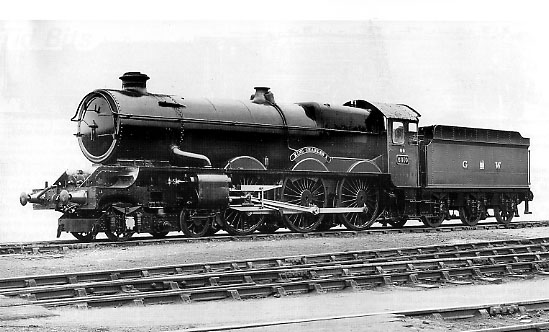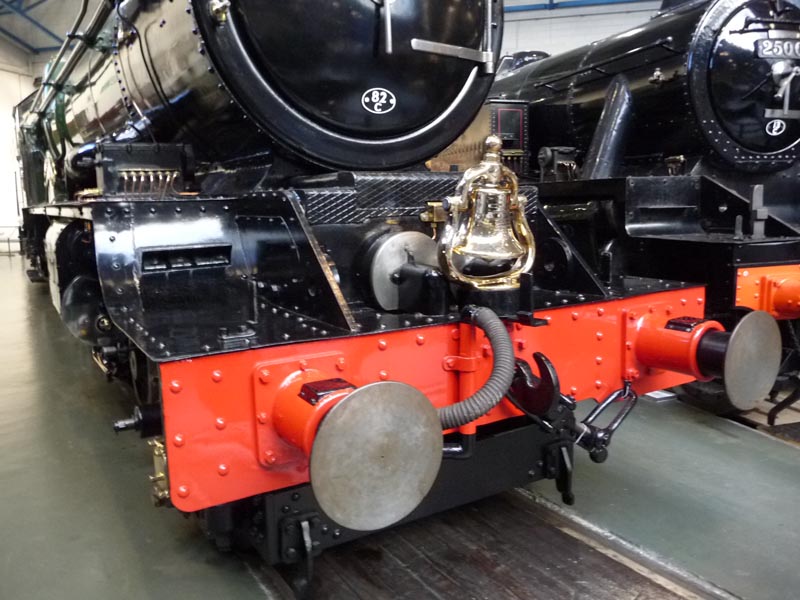|
Close Encounter with a King

Duncan du Fresne’s comments about the Great Western
Railway “King” class in his recent articles on the Ten Most Significant Locomotives
of All Time evoked strong memories. They were “powerful, high speed
main line machines in a small package” but there was a lot to clean, especially
as the cleaning was all done by hand.
I was a cleaner at Reading in the summer of 1962. The diesels were already upon us and the Kings would all be withdrawn by the end of the year. Reading was about 40 miles west of London and the only Kings we saw were non-stop running through on the main line – until Wednesday 15th of August. I signed on at 06:00 and made my way to the cleaners room where everyone was excited because 6000, King George V, was on shed. It had failed the previous night and was being made ready to run light engine to Swindon. We ran out and stood in awe at this machine which we regarded as the pinnacle of the steam locomotive. It had a good coat of paint but had been neglected and was in need of a good clean. At that moment, Eddie, the Chargehand Foreman came out and we asked if we could clean the King. He scowled: “Its not one of ours but Gladiator will be going out this morning and that needs a wipe down.” No. 5076, Gladiator was one of our Castles and we always kept it in good condition. We argued with Eddie to no avail, although he did allow a couple of us to get out the Brasso and polish the King’s bell. King George V had been fitted with a bell when it visited the United States shortly after it was constructed. The bell, located on the front buffer beam, had been retained as a reminder of that occasion although it was not operative. As soon as Eddie had wandered off we got up on to the footplate (cab). The controls were almost identical to the latter Castles. One attractive feature of all former Great Western locomotives was the varnished hardwood handles on the valves. This encouraged care from the footplate crews - certainly not the rough treatment frequently meted out to locomotives from other railways where a stiff steam valve might be “helped” with the coal pick. Of course, once in the cab I had to put on a shovelful of coal. The firebox was very narrow as it was set above the rear driving axle and between the wheels. To get coal to the front one had to throw the coal about twelve feet. My shovelful hit the front tube plate with a satisfying thunk. I said to the others: “See if you can throw the coal so hard that you can ring the bell.” Everyone had a go and, although all but one hit the tube plate, none made the bell ring. The one who couldn’t get the coal to the front was Titch. This short fellow, about 17 years old, intended to join the Grenadier Guards. “I want a bit of excitement in my life. I want to go around killing people.” I lost track of Titch but he would have needed to have grown a lot to have made the minimum height requirements for the Grenadier Guards. There is a story that only one fireman was able to make the bell ring. He tied a thin wire to the bell, ran it back to the cab and tied it to a damper handle. When he made his swing he trod on the wire and rang the bell! The fireman arrived while we were engaged in putting coal to the front of the firebox. He was ecstatic as he was actually going to work on a King and his driver had promised to let him drive. He was so elated that he wasn’t even upset with us for putting way too much coal up front – the normal method of firing was to build a four or five foot deep fire at the back and motion of the engine would normally move the fire forward to the front. At that moment Eddie came by and we all scurried back to put the final touches on Gladiator. Gladiator had one thing in common with the Kings. It also had a rivetted tender. The later Castles had welded tenders which were much easier to clean. One had to clean around all of the rivets so working on the tender took much more time. That was my only encounter with a King. I saw the fireman a couple of days later. He was still in cloud nine. At least he could say that he had driven a King.  Bernie Goodman took this picture of the bell on King George V when he visited the York Railway Museum in January 2012. It is now in much better condition than when I polished it. See also ../Diary/Diary_1962-08.html Wednesday 15 August 1962. Bytown Railway Society, Branchline, March 2006. |
![]()